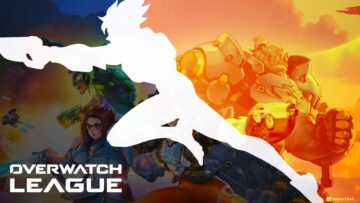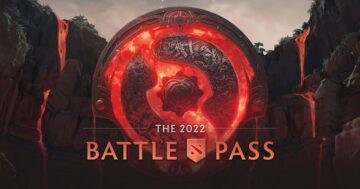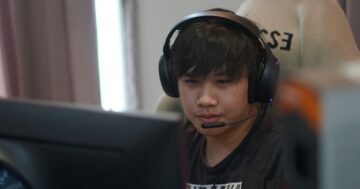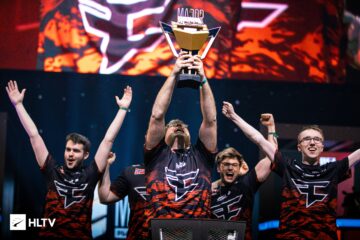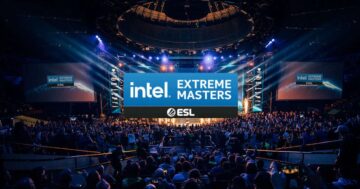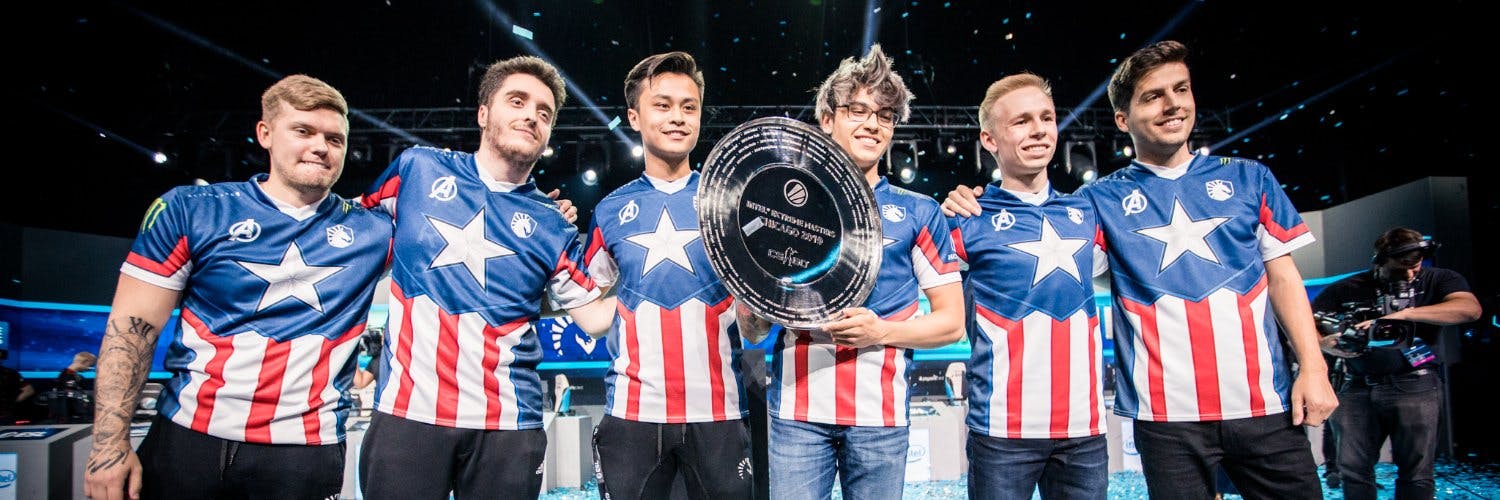
It’s the fourth of July. You know, the day when the eagles soar high above flyover country before they get blown to smithereens by all the fireworks. What better time to sniff some star-spangled hopium? You see, even though it may not seem like it so far, I genuinely believe that the impending arrival of Counter-Strike 2 could mark the dawn of a great new era for North American CS.
We’re in the darkest and dankest timeline where Team Liquid went majority-European, Cloud9 abandoned the NA Major winner mantle for the ex-Gambit squad, ATK dropped their team entirely, and Complexity carry the torch with the signing of a downward-trending EliGE. It’s often said that this is as weak as the North American scene has ever looked, and while the present certainly doesn’t offer many positives, I’d argue the future is brighter than it seems, and that glimpse of light you see at the end of the tunnel isn’t actually an oncoming train.
For starters, the franchise is in a great shape, which is important to note. CS:GO has been repeatedly breaking player records despite running on some pretty obsolete foundations. Bare-bones matchmaking, rare content updates and infrequent communication from the developers during the silent years of CS2’s development could have kneecapped the game, but it continued to go from strength to strength even with new competitors and global calamities emerging.
There are many reasons to be excited about CS2, and I believe its expected impact on the gaming scene at large is woefully underestimated even by the Global Offensive community. This will be the first game to feature Counter-Strike’s legendarily durable formula to a wide audience in an era of the largest-ever gaming community, with a technological level heretofore unseen, that genuinely rivals our outmatches its genre counterparts.
No longer held back by the tower of duct tape that is the Source 1 engine, the developers of CS2 have the opportunity to create something special and to maintain a much sturdier update regimen than they ever could for CS:GO. Just consider the fact that the game kept on breaking records even while most of the relevant dev team worked on the sequel: surely this means fantastic prospects?
I’m sure this will have a direct impact on the flagging North American scene, too. For a period, Counter-Strike will be is the hip new game the way VALORANT was recently and Overwatch before that, already guaranteeing an influx of players. And Valve’s outlook on esports, often seen as an impediment during the boom years, may serve to be a net positive in the more turbulent times of the present.
We’re in the middle of the so-called esports winter, with VC money and other excesses of the past rapidly getting curbed back. With our audience’s unwillingness to pay for broadcasts, perhaps it turns out Valve was right all along, and treating competitive gaming as its standalone media product in the vein of Riot and Blizzard was perhaps a bridge too far.
With more stakeholders around, but Valve always hovering over them to rein in the greatest excesses, perhaps the unique third-party circuit holds more staying power – and the word from Bellevue is that they are not too keen on the semi-exclusive nature of some of the biggest events out there. A more open circuit only serves to benefit newcomers, which is the case of every region, NA included.
From a business perspective, there’s always going to be an inherent appeal of the US market, no matter how dormant it is. Large North American multi-game orgs like Cloud9, Team Liquid and Complexity will always gravitate towards NA rosters because of existing history and the location of their facilities. Plus, if you’re willing to look past the nationalities of the current squads, it’s not like the big orgs are departing the scene – if anything, with TSM’s rumored return (and 100Thieves’ Nadeshot’s longstanding interest in the game), the foundations don’t even look all that bad.
There’s no denying that the current level of talent in the North American scene can’t match the European elite, and there’s little way to compete at the highest levels without setting foot on the old continent. But with a brave new world almost upon us, those in the New World may benefit from it more than it seems at first sight.
- SEO Powered Content & PR Distribution. Get Amplified Today.
- PlatoData.Network Vertical Generative Ai. Empower Yourself. Access Here.
- PlatoAiStream. Web3 Intelligence. Knowledge Amplified. Access Here.
- PlatoESG. Automotive / EVs, Carbon, CleanTech, Energy, Environment, Solar, Waste Management. Access Here.
- BlockOffsets. Modernizing Environmental Offset Ownership. Access Here.
- Source: https://www.rivalry.com//esports/cs2-could-revitalize-the-na-scene-even-if-the-first
- 1
- a
- About
- above
- actually
- All
- along
- already
- always
- American
- an
- and
- Anything
- appeal
- ARE
- argue
- around
- arrival
- as
- At
- audience
- back
- bad
- BE
- because
- been
- before
- believe
- bellevue
- benefit
- Better
- BIG
- Biggest
- Blizzard
- boom
- brave
- Breaking
- BRIDGE
- brighter
- business
- but
- by
- carry
- case
- certainly
- Circuit
- Cloud9
- Communication
- community
- compete
- Competitive
- competitors
- complexity
- Consider
- content
- continued
- could
- Counter-Strike
- country
- create
- cs
- CS:GO
- Current
- day
- despite
- Dev
- developers
- Development
- direct
- dropped
- During
- eagles
- elite
- emerging
- end
- engine
- entirely
- era
- esports
- European
- even
- events
- EVER
- Every
- excited
- existing
- expected
- Facilities
- fact
- far
- Feature
- fireworks
- First
- For
- formula
- foundations
- Franchise
- from
- future
- game
- Gaming
- Genre
- Get
- getting
- glimpse
- Global
- go
- going
- great
- greatest
- has
- Have
- held
- High
- highest
- history
- holds
- hopium
- How
- HTTPS
- i
- if
- Impact
- impending
- important
- in
- Included
- influx
- inherent
- interest
- Is
- IT
- ITS
- jpg
- July
- just
- keen
- kept
- know
- large
- Level
- levels
- light
- like
- Liquid
- Little
- location
- longer
- Look
- looked
- maintain
- major
- many
- mark
- Market
- Match
- matter
- May
- means
- Media
- Middle
- money
- more
- most
- much
- na
- nature
- net
- New
- new world
- no
- North
- not
- of
- offensive
- offer
- often
- Old
- on
- only
- open
- Opportunity
- Other
- otherwise
- our
- out
- Outlook
- over
- Overwatch
- Past
- Pay
- perhaps
- period
- perspective
- plato
- plato data intelligence
- platodata
- platogaming
- player
- players
- Plus
- Positive
- power
- present
- pretty
- Product
- prospects
- rapidly
- Rare
- reasons
- recently
- records
- region
- relevant
- return
- right
- Riot
- rivalry
- rivals
- roster
- Roster Moves
- Rosters
- running
- Said
- scene
- see
- seem
- seems
- seen
- sequel
- serve
- serves
- setting
- shape
- sight
- signing
- Sniff
- So
- so Far
- some
- something
- source
- special
- stakeholders
- standalone
- starters
- strength
- suggest
- sure
- Talent
- Team
- Team Liquid
- Technological
- than
- that
- The
- The Future
- The Game
- The Source
- their
- Them
- there
- they
- this
- those
- though
- time
- times
- to
- too
- torch
- towards
- Train
- treating
- tunnel
- turbulent
- turns
- unique
- Update
- Updates
- upon
- us
- VALORANT
- valve
- VC
- was
- way
- went
- What
- when
- where
- while
- wide
- will
- willing
- winner
- Winter
- with
- without
- worked
- world
- years
- you
- zephyrnet


